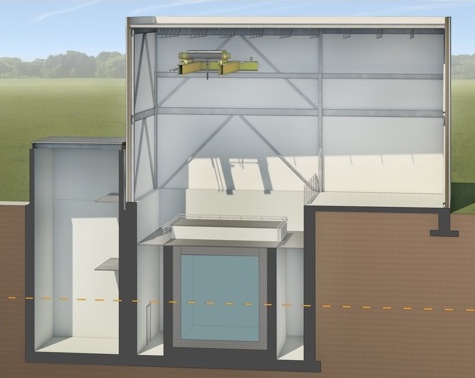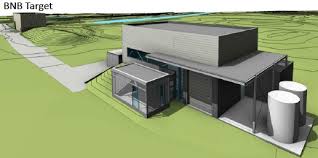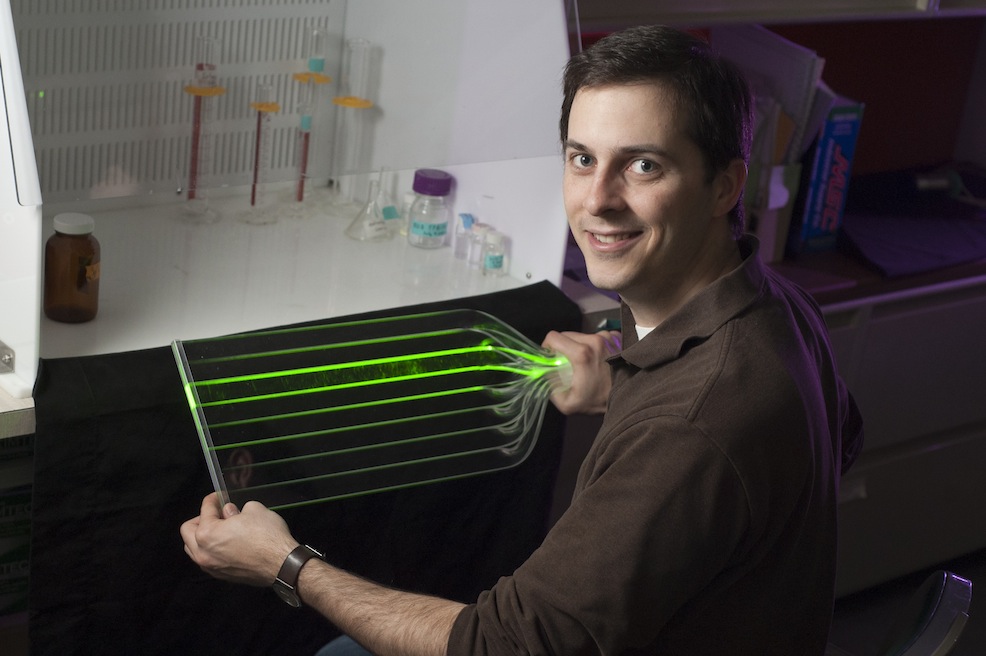
|  |
SBND, formerly known a
LAr1ND is a liquid-argon-based detector
located near to the Booster Neutrino Beamline at Fermilab. Because of
its proximity to the target, the experiment will have very high
rates. This will allow precision cross section measurements. The
experiment will also act as a near detector for the
MicroBooNE experiment.
The images above show a cut-away of the detector in the hall (left)
and view of the hall looking toward the target (right). SBND will
run in 2018.

We are developing a new light detection system for this experiment that employs light guides. In liquid argon, scintillation light is produced when charged particles in the event produce excimers that proceed to radiate 128 nm ultraviolet (UV) photons. The UV light must be shifted to the visible before detection. Our new system would replace the MicroBooNE-style systems that are commonly used in LArTPCs.

To produce light guides, we coat acrylic bars with a wavelength-shifting material that matches the index of refraction of acrylic. When 128 nm scintillation light hits the guide, the coating re-emits in the visible. Five percent of the light is emitted at higher than the critical angle and so is trapped in the guide. This bounces to the end, as illustrated above, and can be detected.
We published a first demonstration of the concept here, which was then published in NIM. In our most recent paper we have reported improvements to the light guide detector design, showing that we have obtained much higher light yield and longer attenuation length. Please read our latest paper here which is submitted to JINST.
This page was updated April 2015